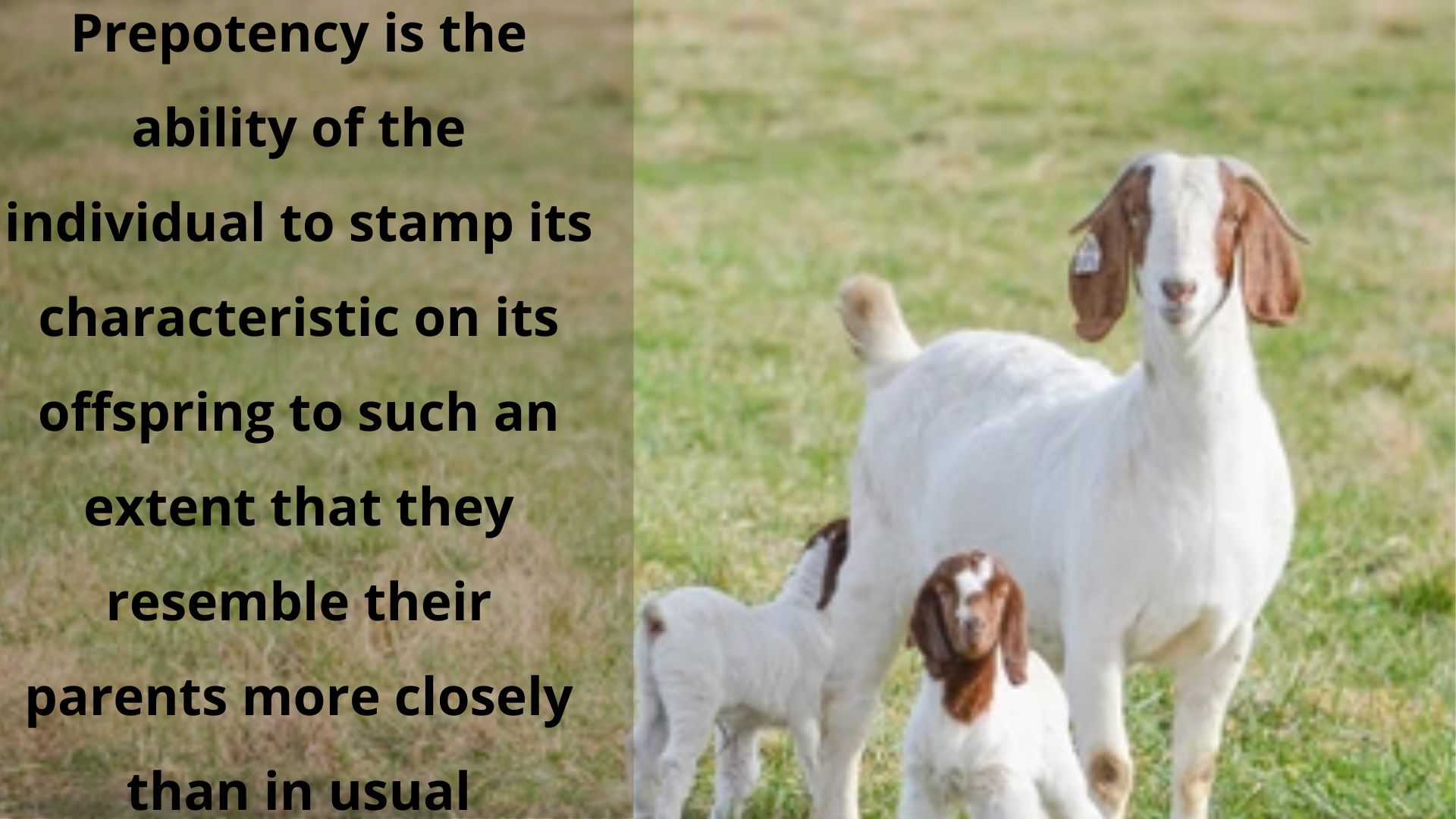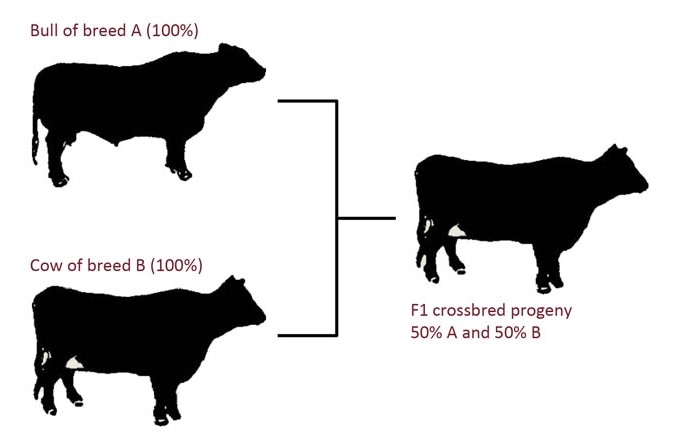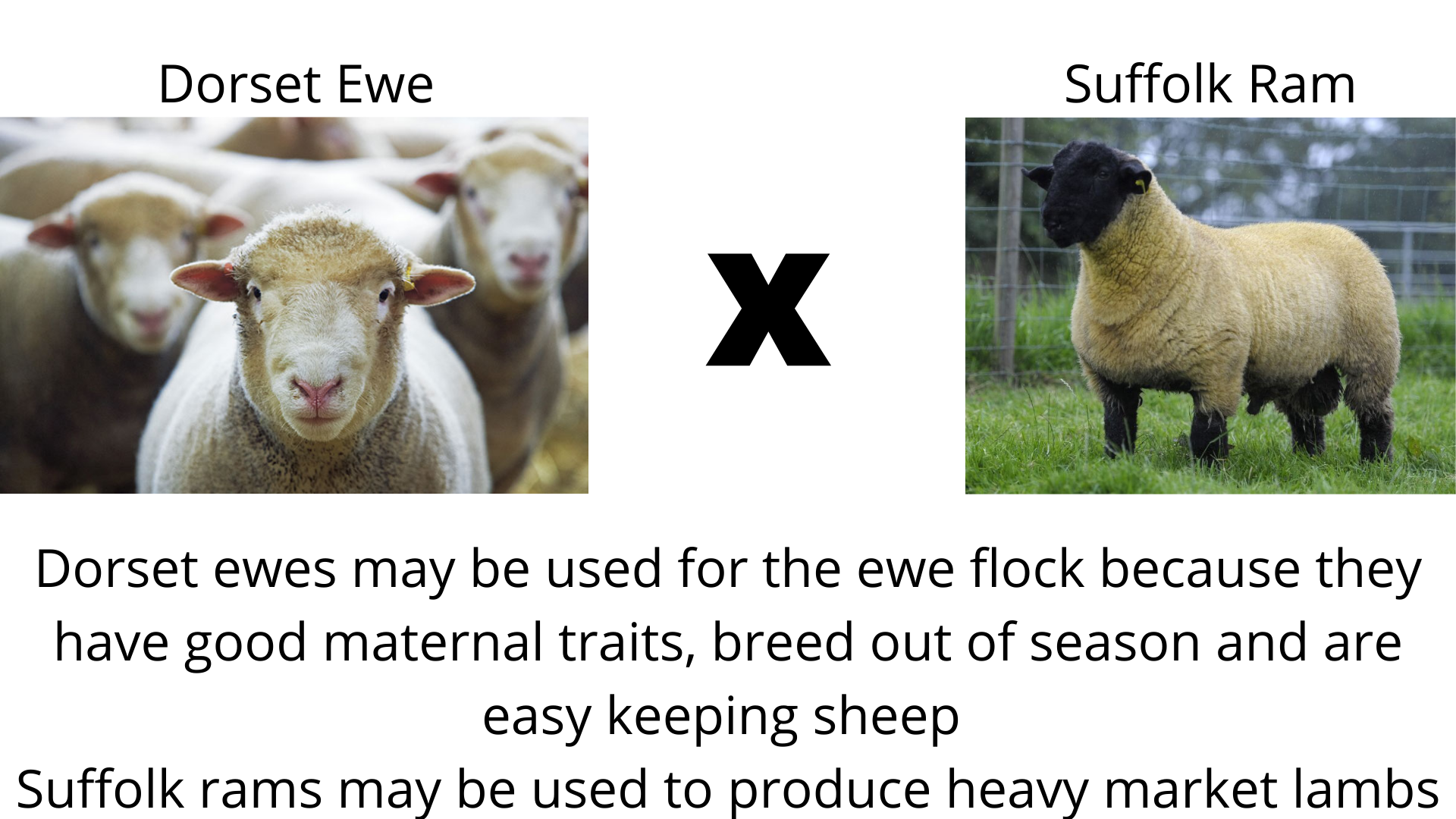We have looked at the importance of a high fertility rate to be able to select successfully. To be able to breed successfully, also needs a plan. To understand the plan better, let us have a look at the different breeding systems.
The success or failure of any system depends on:
- The frequency of the desirable genes that can be accumulated in the breeding flock.
- The breeder’s ability to select effectively.
- The breeder’s ability or good fortune in mating the correct animals. Any system of animal breeding may be classified under one of two headings, namely inbreeding and out breeding. Inbreeding includes line breeding and family breeding; out breeding includes specie crosses, upgrading, crossbreeding and out crossing. Inbreeding is the mating of related animals; out breeding is the mating of unrelated animals.
Inbreeding

Inbreeding involves the mating of animals related to each other. More specifically, the mating of animals that is more closely related to each other than the average relationship in the flock, and even closer than any two animals drawn from the flock at random. The most intensive form of inbreeding is the repeatedly mating of a full brother with a full sister, sire with daughter or son with dam.
The genetic effect of inbreeding is that it makes more pairs of genes in the population homozygous.
In general, the effect of any system of inbreeding is an increasing of homozygosity and decreasing of heterozygosis. If harmful recessive genes are present in the stock, inbreeding will convert them (homozygous), thus enabling us to eliminate them at a faster rate. It is usually impossible, even by the most rigid selection, to rid an inbred line of all detrimental recessive genes.
Inbreeding Depression
Past experience has shown that inbreeding is usually associated with an overall decline in vigour and performance. Some examples of inbreeding depression are given in Table A.
Table A Inbreeding depression per 10% increase in inbreeding coefficient.

From the results of these and many other studies we can generalize that inbreeding tends to reduce fitness. Thus, characters that forms an important component of fitness, such as the number of young born, or lactation in mammals show a reduction after inbreeding. In saying that a certain character shows inbreeding depression, we refer to the average change of mean value in a number of inbred lines. These separate lines are commonly found to differ to a greater or lesser extent in the change they show.
Inbreeding is the most powerful instrument at the disposal of the breeder to build up uniform or similar families or bloodlines. Inbreeding is therefore the only way in which pure-breeding groups can be obtained. However, breeders must realize that purity resulting from inbreeding is attributable to the system of mating related animals, while selection merely gives direction to this process.
In practice "pure breeding" usually means inbreeding within a specific breed and crossbreeding with other breeds thus being excluded.
The most important reasons for the application of inbreeding in a flock are the following:
- It is necessary when the relationship with a specific good ancestor must be maintained at a high level.
- It helps to reveal undesirable recessive characters and eliminate it from the flock.
- It results in uniform and separate families, so that the selection between family groups can be applied effectively.
- It increases pre-potency.
- Sometimes it is necessary because of financial considerations, particularly when another good sire must succeed a specific ram in use, which is of excellent quality and has been purchased at great expense.
The danger of intensive inbreeding is that the accumulation of undesirable homozygous genes takes place at such a rate that it is impossible to remove all the animals showing weaknesses as a result, from the flock. Some of these undesirable genes will therefore be fixed in the whole flock.

Definition: Pre-potency - Power superior to that of the other parent in transmitting inheritable characters to the offspring.
The phenomenon of degeneration resulting from inbreeding may easily make its appearance in a flock without being identified as such. This problem probably arises when farmers breed their own rams by using a few purchased stud rams on a nucleus flock. A nucleus flock is usually small, which means that the successive sets of rams bred from it will therefore practically be regarded as half-brothers. Lambs of successive years will therefore be cousins, and this causes an increase in inbreeding of approximately six per cent in the flock. Dams can also be regarded as of poor quality.
The danger of artificial insemination can also bring about severe inbreeding. The degeneration caused by inbreeding is often greater than the estimate inbreeding improvement resulting from the higher selection intensity. An unqualified recommendation can therefore not be made for the application of artificial insemination with a small stock, particularly not in cases where the flock consists of less than 2 000-breeding ewes.
Line Breeding
Line breeding is a form of inbreeding and a system in which the relationship of an individual, or individuals, is kept as close as possible to some outstanding ancestor. The ancestor is usually a male rather than a female, because a male produces many more offspring than a female, and this allows a greater opportunity to prove his merit by means of a progeny test. The genetic effect of line breeding is the same as that of inbreeding. Thus, homozygosis is increased, but in addition, line breeding increases the probability that the line-bred offspring will possess the same genes as the ancestor to which line breeding are directed. Line breeding is also possible when the outstanding individual is already dead or not available for breeding purposes. In such a case one or more of the ancestor's sons or descendants may be used to keep the relationship high.

Out Breeding
This is the breeding of animals not related to each other. The forms of out breeding to be discussed here are:
Species Crossing
This is the widest form of out breeding and involves the crossing of different animal species, for instance, the donkey with the horse. This type of cross is of little practical use in the small stock industry.
Upgrading
Upgrading is the continual use - generation after generation - of male animals of a specific breed in a flock of another breed, e.g. the successive use of Merino rams on a hybrid flock, for the purpose of gradually building-up a Merino flock. Upgrading is the most economical way to build up an ordinary stock to the level of stud animals, or purebred animals. The rate at which purebred male animals will change the genetic constitution of a flock is represented in the Table B:
Table B Rate of blood change with upgrading:

It is clear that a relatively larger improvement takes place in the first few generations. In South Africa many karakul flocks were built up by the continual use of karakul rams in a flock of the Blackhead Persian breed.
Cross Breeding
This term is used for the crossing of purebred animals of different breeds. (Merino crossed with Dorset Horn, etc.). Such a cross usually results in a larger animal, greater vigour and a better breeding capacity. The amount of improvement in these characters however differs for different crosses. On the other hand, crossbreeding destroys the character of pure-breeding or homozygosis and crossbred animals (the products of crossbreeding) will, although they may be excellent individuals, not breed pure.
The advantages and use of cross breeding is as follow:
- The application of hybrid vigour or Heterosis. It is applied in the production of meat, milk and sometimes wool. It is generally known that the best utilization of the Heterosis effect can be obtained in a system where the mother herself is a hybrid animal.
- The development of a new breed or breeds.
- With the development of a new breed, the two breeds chosen as parents are crossed. Sometimes another breed is also introduced in the crossing. The new breed is then developed by strict selection according to the aims of the new breed.

Out Crossing
This is the crossing of animals within a pure breed of animals, but which do not have a common ancestor or ancestors for many generations. Breeders often make use of this method to introduce new blood into a stud or flock and thus to minimize inbreeding. The principal here is to find an animal better than the animals in the farmer’s own flock or stud.
Heterosis or Hybrid Vigour
The phenomenon of heterosis vigour is generally known. A classic example is that of a mule, which is hardier than any of it parents. The chief character of hybrids, in which they differ from pure bred animals, is that they are more heterozygous in their genetic constitution and for this reason hybrid vigour is ascribed to increased heterozygosis.
Definition: Mule - Cross between a donkey and a horse.
Breeding Season
Some farm animals have very specific breeding seasons. In the previous level we have discussed that very well. To refresh your memory:
The British sheep-breeds have a very well-defined breeding season and so have the Angora goat in South Africa.
The angora goats’ breeding season starts in the fall, late February, March and reaches its peak around April, May and decline towards the end of July.
Other breeds like the Dorper and the Indian Bikaneri have a very long breeding season and show no real anoestrus period.
All the Merino and Merino crosses exhibit a long breeding season. There are however farm animals that have a very specific breeding season as day-light length or the lack thereof play a big role.
By controlling the daylight, one also has control on such animal’s production cycle.
Laying hens of most poultry can be controlled in that way.

Breeding Systems and Modern Technology
There are a lot of breeding systems that can be used in farm animals. The best breeding system to improve production is not always achieved without modern technology.
Beef cattle farmers have a very extensive breeding system going. They test the progeny of the bulls (they want to use in their breeding plan) in a well-structured way. They use production traits such as daily growth rate, weaning mass and a lot of meaningful production aspects in a national progeny-testing scheme.
Click here to view a video that explains estimated breeding values?
